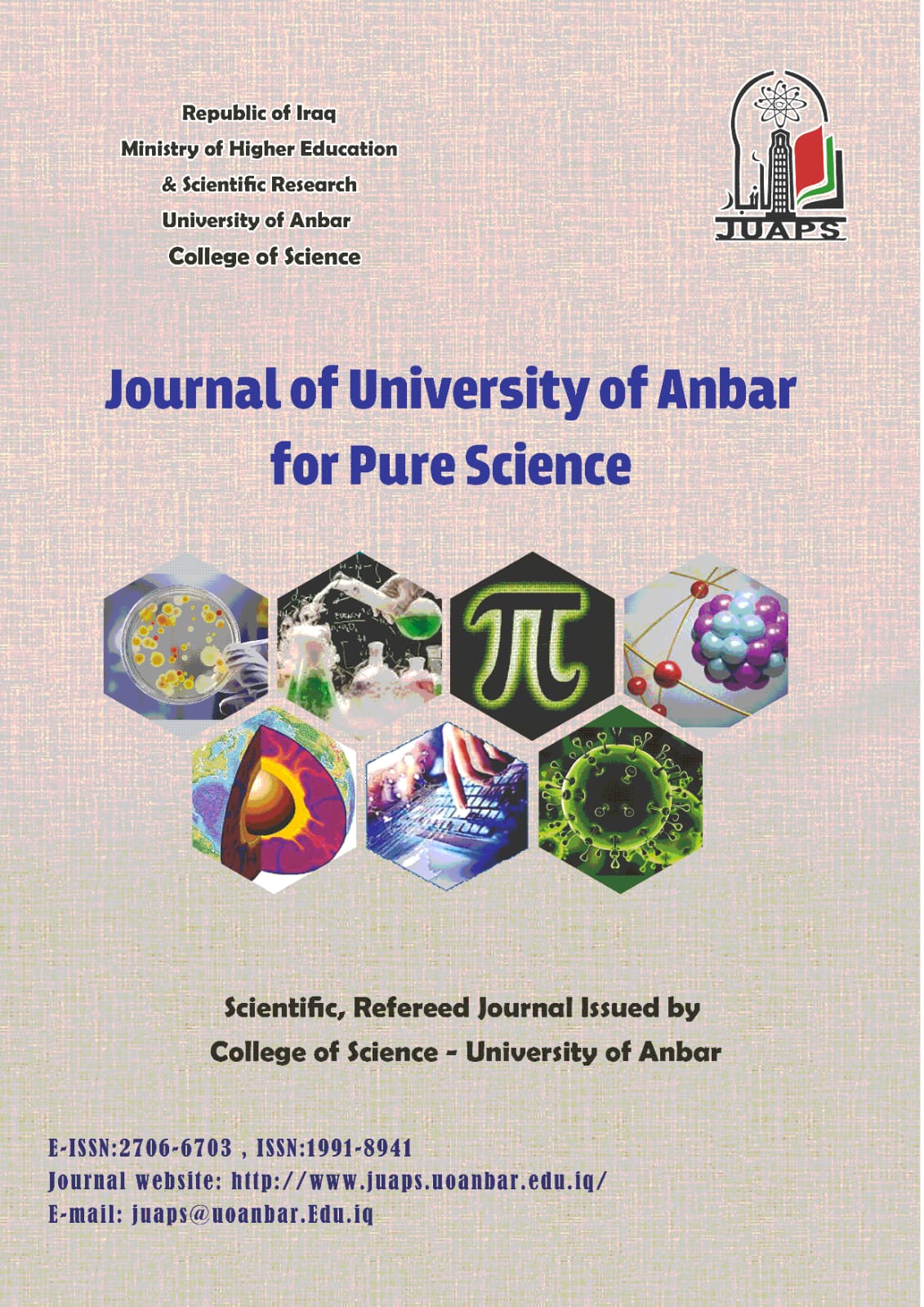Abstract
This study included the collection of 374 samples (distributed according to the source of collection ) as clinical samples (urine, wounds, burns, feces) from Ibn – Al – Baladi childbirth Hospital, AL- Yarmouk Teaching Hospital and Imam Ali Hospital in Baghdad, from both genders of different ages. As well as environmental samples (Tigris river water in Baghdad and soil samples) were collected from Baghdad region at the same period. The bacterial isolation and identification were conducted on a total of 77 isolates of Escherichia coli (20.58%) after their testing on culture media , microscopic examination with the biochemical tests by using Api – 20 E and VITEK2. The results of sensitivity test against vancomycin showed that 73 isolates of Escherichia coli resistant (94.18%) and 4 isolates with intermediate resistance (5.19%) were performed on Muller-Hanton agar using disk diffusion method . Chromosomal and plasmid DNA were extracted for 31 isolates in a molecular techniques for precise identification. Molecular detection was achieved for all isolates ( of various pathogens ) by using a specific 16SrRNA gene . Owing to the resistance and sensitivity results obtained with the method diagnosis,29 clinical and 2 environmental samples were selected for detection and molecular study . This molecular study detected the vancomycin resistance genes of Enterobacteriaceae in Iraq for the first time . Both chromosomal and plasmid DNA were used in PCR technique to diagnose the Vancomycin resistance genes by using specific primers (VanA,VanB,VanC) . Results of the electrophoresis on agarose gel cleared that all isolated Escherichia coli possessed resistance gene on their plasmid DNA or chromosomal DNA or on both of them with variable ratios .
Keywords
جينات المقاومة المكتسبة، Escherichia coli، PCR، 16SrRNA.
Abstract
شملـت هذهِ الدراسـة جمـع 374 عينة سريريـة )الادرار، الجروح، الحروق، خروج) من مستشفـى ابن البلـدي للولادة، مستشفـى اليرموك التعليمـي ومستشفـى الامـام علـي فـي بغـداد وغير سريرية (ماء نهر دجلـة في بغداد و تربـة حدائق) ومـن كـلا الجنسيـن ومـن مختلـف الأعمـار للتحـري عـن وجـود بكتريـا Escherichia coli اذ تم عزل وتشخيـص 77 عزلـة لبكتريـا Escherichia coli وبنسبة 20.58%، استنادا الى الفحوصـات الزرعيـة والمجهريـة والكيمـوحيـويـة ونظـام Api-20 E وجهـاز.VITEK2 اجري اختبـار الحساسيـة لجميع عزلات البكتريـا للمضـاد الحيـوي الفانكومايسيـن على وسـط آكـار مـولـر- هنتـون بـإستعمـال طريقـة الانتشـار بالأقـراص، واظهرت النتـائـج 73 عزلـة لبكتريـا Escherichia coli المقاومـة ونسبـة مقاوتهـا 94.81% و4 عزلات Escherichia coli ذات المقاومة المتوسطـة وبنسبـة 5.19% ولغرض التشخيص الدقيق للعزلات بالطرائق الجزيئية، تـم استخـلاص الدنـا الكـروموسومـي والبلازميـدي للعزلات المنتخبه (الحاوية على بلازميدات) (31 عزلـة)، اذ استـخـدم بـادئ نوعـي متخصص لجيـن16SrRNA لتشخيـص بكتريـا Escherichia coli المعزولة وكانت نسبـة ظهـور هـذا الجيـن 100% وعلـى ضـوء نتـائـج المقاومـة والحساسـيـة للمضـاد الحيـوي الفانكومايسيـن والتشخيص الجزيئي، تـمَ اختيـار 29 عزلـة سريريـة وعزلتيـن بيئية لبكتريـاEscherichia coli لغـرض الكشـف والدراسة الجزيئية ولأول مـرة بالقطـر عـن الجينـات المقاومـة للفانكومايسيـن فـي هـذهِ البكتريا التابعـة للعائلـة المعويـة، واستخـدمَ كـل من الدنـا الكروموسومـي والبلازميـدي فـي تقنيـة تفاعـل البلمـرة المتسلسل (PCR)، اذ تم التحـري عن الجينـات المقاومـة للفانكومايسيـن لهـذهِ العزلات البكتيريـة، بإستخـدام بادئـات نوعيـة متخصصة لجينات المقاومـة لهـذا المضـاد (VanC, VanB, VanA) وأظهـرت نتائـج الترحيـل الكهربائـي علـى هـلام الاكاروز امتـلاك البكتريا
